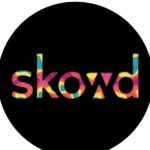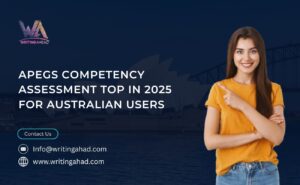In the competitive world of health insurance, having a steady flow of high-quality prospects is crucial for sustained growth and long-term success. This comprehensive pillar guide covers every essential aspect of generating, nurturing, and converting health insurance leads to ensure your agency or business remains one step ahead in the U.S. market.
What Are Health Insurance Leads?
Health insurance leads are individuals or businesses actively seeking information or quotes on health insurance products. These prospects get funneled to insurance agents or companies, who then educate, qualify, and try to convert them into clients. Understanding the types of leads—and the best ways to acquire them—is the secret to maximizing conversion rates and return on investment (ROI).
Major Types of Health Insurance Leads
-
Exclusive Leads: Sold only to a single agency or agent, giving you a better chance at conversion. They cost more but face less competition.
-
Shared Leads: Sold to several agents. They’re less expensive but require fast, effective outreach to beat competitors.
-
Fresh/Real-Time Leads: Individuals who’ve just expressed interest—these leads are delivered to agents immediately. Quick follow-up is essential.
-
Aged Leads: Older leads that haven’t converted yet. They’re inexpensive and can often be revived with the right approach and nurturing.
-
Self-Generated Leads: Come from your website, referrals, or community engagement—these are high intent and often easier to close.
Who Is Your Ideal Health Insurance Prospect?
Effective campaigns start with understanding who you’re targeting. Typical U.S. segments include:
-
Self-Employed Individuals & Small Business Owners
-
Families Seeking Affordable Coverage
-
Seniors Exploring Medicare Options
-
Young Adults Shopping for First-Time Policies
-
People Searching Due to Life Changes (job switch, marriage, children, etc.)
Location, employment type, age, and intent signals (such as searching “how do health insurance deductibles work”) all inform your strategy.
Top Channels for Health Insurance Lead Generation
1. Paid Search & Local SEO
Target high-intent keywords:
-
“health insurance for self employed”
-
“cheap health insurance”
-
“health insurance broker near me”
-
“affordable health insurance plans”
Advertise with local extensions and call-only ads, and optimize your Google Business Profile for insurance-related searches.
2. Content Marketing & SEO
Build a content cluster around a central pillar page (like this one), with internal links to in-depth guides on:
-
Understanding deductibles and copays
-
Finding affordable coverage
-
Differences between plan types
-
State-specific health insurance regulations
Use lead magnets, calculators, e-books, and checklists in exchange for contact details.
3. Social Media & Retargeting
Facebook and LinkedIn are effective for U.S. lead acquisition. Use
-
Lead Ad forms
-
Sponsored content for HR managers or small business owners
-
Retargeting ads for visitors who abandon the quote process
4. Partnerships & Referrals
Develop relationships with mortgage brokers, realtors, tax professionals, and local small business networks. Referrals are highly qualified and convert at higher rates.
5. Email & SMS Nurturing
Send automated sequences that educate, address objections, and prompt next steps. Use SMS for important reminders (especially during open enrollment).
Keyword Clusters for Content Strategy
-
Deductible Education: what is a deductible in health insurance, how do deductibles work
-
Affordability & Value: affordable health insurance, cheap health insurance, health insurance deals
-
Specific Segments: health insurance for self-employed, small business health insurance
-
Local Search: health insurance broker near me, health insurance agent in [city/state]
-
Compliance & Updates: tax penalty for no health insurance, state health insurance rules
How to Qualify and Score Leads
Not all leads are equally valuable. Points-based lead scoring helps focus your sales energy. Prioritize prospects who:
-
Completed a detailed quote form
-
Downloaded informational guides
-
Opened and clicked links in nurture emails
-
Requested a callback or consultation
-
Are located in your service area
Best Practices for Converting Health Insurance Leads
-
Speed to Lead: Respond within 5 minutes.
-
Personalization: Reference the plan, price range, or deductible they searched for.
-
Multi-channel Touches: Combine calls, emails, SMS, and retargeting ads.
-
Overcoming Objections: Train your team to confidently answer questions about premium costs, networks, and pre-existing conditions.
-
Build Social Trust: Share testimonials, reviews, and real savings examples.
Tracking, Compliance, and Continuous Improvement
-
Use a robust CRM to track all interactions and outcomes.
-
Monitor your KPIs: cost-per-lead (CPL), conversion rate, lead-to-quote time, and close rate.
-
Stay current with all data privacy and disclosure laws. Always get explicit consent for communications and operate only within your state licensing.
Frequently Asked Questions (FAQs)
Q: Are aged leads worth it for health insurance sales?
A: Yes—if worked properly, aged leads are a budget-friendly way to expand your funnel and often convert with strategic nurturing.
Q: What’s the best way to find local health insurance leads?
A: Combine Google My Business optimization, local content pages, and paid search ads targeting “near me” keywords.
Q: Is it important to use multiple marketing channels?
A: Absolutely. Diversifying your marketing (SEO, PPC, partnerships, email, social) ensures a more stable, predictable lead flow.
- Ultimate Guide to Health Insurance Leads | Generate Quality Leads in 2025
- Discover proven strategies to generate, nurture, and convert high-quality health insurance leads in the United States. Boost your insurance sales with expert tips and keyword-driven content in 2025.
- health insurance leads
Related posts:
 California Marketing Agency Services That Drive Real Results
California Marketing Agency Services That Drive Real Results
 Best PPC Services in India: Grow Your Business with the Right Partner
Best PPC Services in India: Grow Your Business with the Right Partner
 Buy Authentic Sp5der Hoodies – Quality, Comfort & Style Buy Authentic Sp5der Hoodies – Quality, Comfort & Style
Buy Authentic Sp5der Hoodies – Quality, Comfort & Style Buy Authentic Sp5der Hoodies – Quality, Comfort & Style
 “Discover the Value of Custom Book Boxes in Quality Packaging”
“Discover the Value of Custom Book Boxes in Quality Packaging”
 How UAE Startups Are Embracing Automation Through Apps Your Solution here
How UAE Startups Are Embracing Automation Through Apps Your Solution here
 “Frames that Speak”: Why a Video Editing Company in India Is Your Brand’s Secret Weapon
“Frames that Speak”: Why a Video Editing Company in India Is Your Brand’s Secret Weapon
 Best Professional Digital Marketing Course in Delhi for Beginners
Best Professional Digital Marketing Course in Delhi for Beginners
 Global Semi-Automatic and Manual Filling Equipment Market Size, Share, Key Drivers, Growth Opportunities and Global Trends 2032
Global Semi-Automatic and Manual Filling Equipment Market Size, Share, Key Drivers, Growth Opportunities and Global Trends 2032






